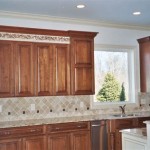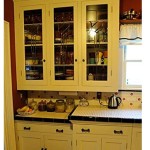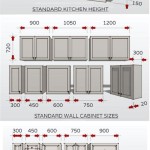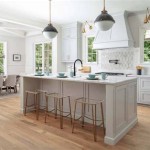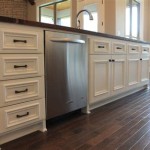Kitchen Cupboard Door Handles With Backplate: A Comprehensive Guide
Kitchen cupboard door handles are a crucial element in both the functionality and aesthetics of a kitchen. Beyond their practical purpose of facilitating easy opening and closing, they contribute significantly to the overall design style. Among the diverse range of handle options available, kitchen cupboard door handles with backplates offer a unique blend of visual appeal, durability, and enhanced protection for the cupboard surface.
A backplate, also known as a escutcheon, is a decorative or protective plate that sits behind the handle. It is typically made of the same material as the handle itself, but can sometimes be crafted from contrasting materials for added visual interest. The primary function of a backplate is to distribute the force applied when pulling on the handle over a wider area of the cupboard door. This helps to prevent wear and tear, scratches, and potential damage to the cabinet finish around the handle area. Furthermore, backplates can conceal existing imperfections or drill holes from previous hardware, providing a cleaner, more polished look.
The selection of kitchen cupboard door handles with backplates requires careful consideration of several factors, including the style of the kitchen, the material and finish of the handles, the size and shape of the backplate, and the overall budget. Understanding the different types of handles and backplates available, as well as their respective advantages and disadvantages, is essential for making an informed decision that complements the kitchen's design and provides lasting functionality.
Aesthetic Considerations: Style and Finish
The aesthetic impact of kitchen cupboard door handles with backplates is significant. They can enhance the existing style of the kitchen or introduce a new design element to create a distinct look. The choice of handle style and finish should align with the overall design theme of the kitchen, whether it be traditional, contemporary, farmhouse, or industrial.
For traditional kitchens, ornate handles with antique brass or oil-rubbed bronze finishes are often preferred. These handles typically feature intricate detailing and a classic design that complements the rich wood tones and elaborate moldings often found in traditional kitchen settings. Backplates in traditional styles often feature decorative flourishes, embossed patterns, or scalloped edges, adding to the overall sense of elegance and sophistication.
In contemporary kitchens, sleek, minimalist handles with stainless steel or brushed nickel finishes are more commonly used. These handles typically have a clean, streamlined design with a focus on functionality and simplicity. Backplates in contemporary styles tend to be simple and geometric, with clean lines and a minimal profile. They provide a subtle visual accent without overwhelming the overall design.
Farmhouse kitchens often feature rustic handles with wrought iron or pewter finishes. These handles have a more textured and weathered appearance that complements the natural materials and relaxed feel of a farmhouse kitchen. Backplates in farmhouse styles may feature exposed screws or a hammered texture, adding to the rustic charm.
Industrial kitchens often utilize bold, utilitarian handles with black iron or chrome finishes. These handles have a no-nonsense design that complements the exposed brick, concrete, and metal elements often found in industrial kitchen settings. Backplates in industrial styles tend to be simple and functional, with a focus on durability and practicality.
Beyond the overall style, the finish of the handle and backplate is also important. The finish should complement the color and material of the cupboard doors and other hardware in the kitchen. Common finishes include stainless steel, brushed nickel, oil-rubbed bronze, antique brass, chrome, pewter, and black iron. Each finish offers a different aesthetic and level of durability, so it is important to choose a finish that is both visually appealing and resistant to wear and tear.
Material and Durability: Ensuring Longevity
The material of the kitchen cupboard door handles with backplates directly impacts their durability and longevity. Handles and backplates are typically made from metal, with common options including stainless steel, brass, zinc alloy, and iron. Each material offers different levels of strength, corrosion resistance, and aesthetic appeal.
Stainless steel is a popular choice for kitchen cupboard door handles due to its exceptional durability and resistance to corrosion. It is a strong and sturdy material that can withstand frequent use and exposure to moisture and cleaning agents. Stainless steel handles are also relatively easy to clean and maintain, making them a practical choice for busy kitchens. The finish can range from polished to brushed, offering flexibility in design.
Brass is another durable and attractive option for kitchen cupboard door handles. It is a strong and corrosion-resistant metal that can withstand the rigors of daily use. Brass handles often have a warm, golden tone that adds a touch of elegance to the kitchen. They can be polished to a high shine or left to develop a natural patina over time. Brass is often plated with other metals to achieve a desired finish and provide additional protection.
Zinc alloy is a more affordable option for cupboard handles. While not as strong as stainless steel or brass, it still offers acceptable durability for most residential applications. Zinc alloy handles are often plated with other metals to improve their appearance and corrosion resistance. They are available in a wide range of styles and finishes, making them a versatile choice for different kitchen designs.
Iron is a durable and robust material that is often used for handles in farmhouse and industrial kitchens. Iron handles have a rustic, weathered appearance that complements the natural materials and rugged aesthetic of these kitchen styles. They are typically finished with a black iron coating to protect against corrosion and enhance their visual appeal. The weight and feel of iron handles often convey a sense of quality and durability.
The choice of material should also consider the environmental conditions of the kitchen. In humid or coastal environments, handles made from stainless steel or brass are generally preferred due to their superior corrosion resistance. In drier climates, zinc alloy or iron handles may be sufficient.
Installation and Functionality: Practical Considerations
The installation of kitchen cupboard door handles with backplates is a relatively straightforward process that can be accomplished with basic tools and a few simple steps. However, proper installation is essential to ensure that the handles are secure and functional, and that the backplates provide adequate protection for the cupboard doors.
Before installing the handles, it is important to measure the distance between the existing holes in the cupboard doors. This measurement will determine the size of the handles and backplates that are needed. It is also important to ensure that the backplates are large enough to cover any existing imperfections or drill holes from previous hardware.
The installation process typically involves drilling new holes in the cupboard doors if necessary, attaching the backplates to the doors using screws, and then attaching the handles to the backplates. It is important to use screws that are the correct length and diameter to ensure a secure fit without damaging the cupboard doors.
The functionality of the handles is also an important consideration. The handles should be easy to grip and operate, even with wet or slippery hands. The backplates should provide adequate clearance for the fingers to avoid bumping or scraping against the cupboard doors. The overall design should be ergonomic and comfortable to use.
Consideration should also be given to the placement of the handles on the cupboard doors. Handles are typically placed in the center of the door, but they can also be placed closer to the top or bottom depending on the design and functionality of the cupboard. For drawers, handles are typically placed in the center of the drawer front.
Furthermore, the functionality of the backplate should be assessed. Ensure the backplate adequately distributes the force applied when opening the cabinet door, preventing damage over time. The size and shape of the backplate should be appropriate for the handle style and the size of the cupboard door. Larger doors may benefit from larger backplates.
Proper maintenance of kitchen cupboard door handles with backplates is crucial for ensuring their longevity and aesthetic appeal. Regularly cleaning the handles with a mild detergent and a soft cloth will help to remove dirt, grease, and fingerprints. Using abrasive cleaners or harsh chemicals should be avoided, as they can damage the finish of the handles. Periodically tightening the screws that hold the handles and backplates in place will prevent them from becoming loose and wobbly. Applying a protective coating of wax or polish can help to protect the finish of the handles and prevent corrosion.

27 Best Kitchen Cabinet Handles Ideas In 2024

Alexander And Wilks Quantock Cupboard Knob On Backplate

Brass Drawer Handles Kitchen Pulls Cupboard Backplate Hardware Vintage

Hexagonal Brass Cupboard Bar Handle With Back Plate Satin Ho Se Home

Polished Chrome Finish Saturn Style Kitchen Cupboard Door Knobs With Square Back Plate

Bordeaux Round Cabinet Knob With Square Backplate

Kitchen Handles Luxury Cupboard Tom Howley

Solid Brass Pull Cupboard Door Handles With Backplate Black Norway


Bordeaux Round Cabinet Knob With Square Backplate
Related Posts

